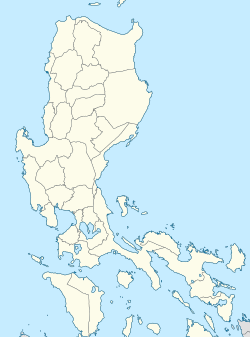
Misamis Oriental, officially the Province of Misamis Oriental, is a province located in the region of Northern Mindanao in the Philippines. Its capital, largest city and provincial center is the city of Cagayan de Oro, which is governed independently from the province and also the regional center of Northern Mindanao.

Cagayan, officially the Province of Cagayan, is a province in the Philippines located in the Cagayan Valley region, covering the northeastern tip of Luzon. Its capital is Tuguegarao, the largest city of that province as well as the regional center of Cagayan Valley. It is about 431 kilometres (268 mi) northwest of Manila, and includes the Babuyan Islands to the north. The province borders Ilocos Norte and Apayao to the west, and Kalinga and Isabela to the south.

Isabela, officially the Province of Isabela, is the second largest province in the Philippines in land area located in the Cagayan Valley. Its capital and the largest local government unit is the city of Ilagan. It is bordered by the provinces of Cagayan to the north, Kalinga to the northwest, Mountain Province to the central-west, Ifugao and Nueva Vizcaya to the southwest, Quirino, Aurora and the independent city of Santiago to the south, and the Philippine Sea to the east.
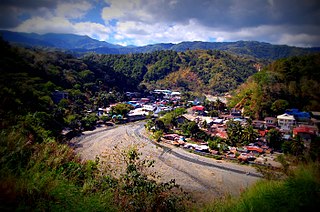
Nueva Vizcaya, officially the Province of Nueva Vizcaya, is a landlocked province in the Philippines located in the Cagayan Valley region in Luzon. Its capital and largest town is Bayombong. It is bordered by Benguet to the west, Ifugao to the north, Isabela to the northeast, Quirino to the east, Aurora to the southeast, Nueva Ecija to the south, and Pangasinan to the southwest. Quirino province was created from Nueva Vizcaya in 1966.
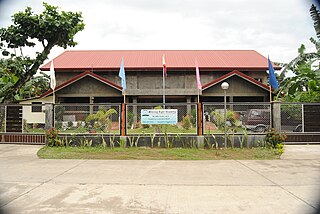
Sanchez Mira, officially the Municipality of Sanchez Mira, is a municipality in the province of Cagayan, Philippines. According to the 2020 census, it has a population of 26,164 people.

Pudtol, officially the Municipality of Pudtol,, is a municipality in the province of Apayao, Philippines. According to the 2020 census, it has a population of 15,491 people.

Alcala, officially the Municipality of Alcala, is a municipality in the province of Cagayan, Philippines. According to the 2020 census, it has a population of 41,295 people.

Pamplona, officially the Municipality of Pamplona, is a municipality in the province of Cagayan, Philippines. According to the 2020 census, it has a population of 24,781 people.

Gamu, officially the Municipality of Gamu, is a municipality in the province of Isabela, Philippines. According to the 2020 census, it has a population of 30,655 people.
The legislative districts of Cagayan are the representations of the province of Cagayan in the various national legislatures of the Philippines. The province is currently represented in the lower house of the Congress of the Philippines through its first, second, and third congressional districts.
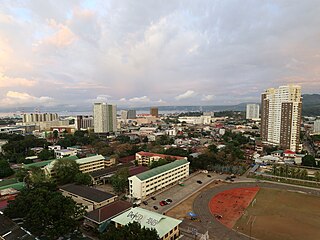
Cagayan de Oro (CDO), officially the City of Cagayan de Oro, is a highly urbanized city in the region of Northern Mindanao, Philippines. According to the 2020 census, it has a population of 728,402 people, making it the 10th most populous city in the Philippines and the most populous in Northern Mindanao.
Atta is an Austronesian dialect cluster spoken by the Aeta (Agta) Negritos of the northern Philippines.

Saint Raymond of Peñafort Parish Church, commonly known as Malaueg Church or Rizal Church, is an early 17th-century Baroque Roman Catholic church located at Brgy. Poblacion, Rizal, Cagayan, Philippines. The parish church, with Saint Raymond of Peñafort as its titular patron, is under the jurisdiction of the Archdiocese of Tuguegarao. The church structure has been declared a National Cultural Treasure by the National Museum of the Philippines in 2001. A marker, bearing a brief history of the church, was installed on the church's facade by the National Historical Commission of the Philippines.

Tuguegarao, officially the City of Tuguegarao, is a 1st class component city and capital of the province of Cagayan, Philippines. According to the 2020 census, it has a population of 166,334 people, making it the most populous city in Cagayan Province, Cagayan Valley and Northeastern Luzon.

Cagayan's 2nd congressional district is one of the three congressional districts of the Philippines in the province of Cagayan. It has been represented in the House of Representatives of the Philippines since 1916 and earlier in the Philippine Assembly from 1907 to 1916. The district consists of the western municipalities of Abulug, Allacapan, Ballesteros, Calayan, Claveria, Lasam, Pamplona, Piat, Rizal, Sanchez-Mira, Santa Praxedes and Santo Niño. It is currently represented in the 19th Congress by Baby Aline Vargas-Alfonso of the Lakas–CMD.
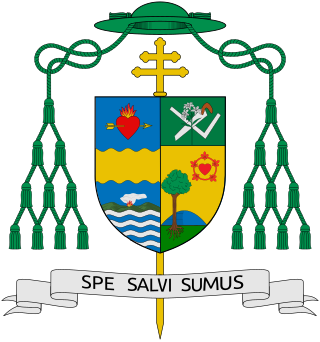
José Araneta Cabantan is a Filipino prelate of the Catholic Church, serving as the archbishop of the Latin Church Metropolitan Archdiocese of Cagayan de Oro in the Philippines.
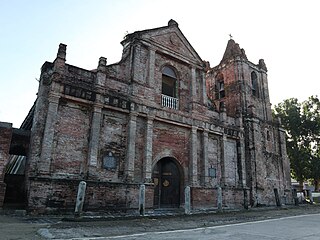
Saint Dominic de Guzman Parish Church, commonly known as Lal-lo Church, is a Roman Catholic church located in Lal-lo, Cagayan, Philippines. It is under the jurisdiction of the Archdiocese of Tuguegarao. The church was built by the Dominican priests in 1596. The facade, with neo-Renaissance style, may have been applied as part of the renovation of the church after a storm in 1845. The National Historical Commission of the Philippines (NHCP) declared it a national landmark and installed a historical marker on the church's facade in 1939.

